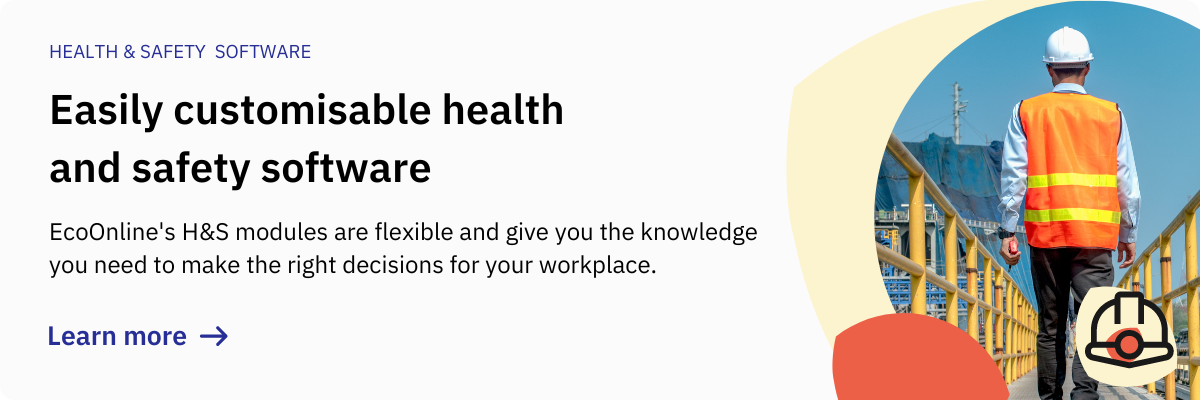For a profession that is constantly evolving with new legislation and best practice, we understand that it's hard to stay on top of the game. That's why we've gone above and beyond to identify 7 steps to help you become a high-flying health and safety genius!
1. Work Smarter
There are many ways of using technology to work collaboratively with people. Gone are the days when you need to email around a method statement, risk assessment, or management plan for comment. The result is often ten versions of the same document with comments which somehow you have to reconcile.
There are now plenty of ways of sharing documents online – Google Drive, OneDrive, SharePoint – all allow file sharing and editing from anywhere. Better still, invest in an online management system to allow you to control and track all your safety documentation.
2. Manage your time well
High flyers seem to get so much done. They don’t stay at work all hours – they find time to sit on voluntary committees, go to parents’ evenings, and have exciting holidays. What they do is manage their time well.
Technology can be a time waster or a time saver. Browsing social media groups, checking and re-checking your emails, responding to every text on your phone can all result in lost time. It is good to network but set aside 40 minutes on a Friday afternoon to catch up on LinkedIn discussions, rather than dipping in and out all week. What is the point of checking all your emails when you only have five minutes and won’t be able to deal with them?
Wait until you have time to sift, respond to or delete emails – perhaps once or twice a day – and spend the rest of the time getting things managing health and safety.
3. Stop Talking
It’s not just about the technology. Whether it’s how to bring up your children, how to run a large corporation, or how to save a marriage, every list tells you this – listen. It’s simple but it’s difficult. We can be so busy explaining to people why they need to do a risk assessment, or why they should wear their PPE, that we don’t stop to listen to them.
In the summer, I noticed that the contractor changing over the bins in the toilets at one of the sites, huffing and puffing in the heat of the day. I asked how he was. He complained that the trousers he was wearing were heavy because of the padding and reinforcements, designed to prevent needle-stick injuries. “But we’ve tested them with a drawing pin, and they don’t work.” If only his health and safety manager had listened to him.
4. Know who to ask
It’s an old adage that it’s not what you know, but who you know. Whilst in health and safety you do need to know a lot of facts – requirements for asbestos or legionella management, requirements for young people or pregnant women, or perhaps a more technical understanding of engineering, chemistry, or ergonomics.
But do you know who to talk to in procurement, in HR, in learning and development? Do you know the names of the support staff? Who fixes the computers, makes the room bookings, manages the stationery, orders the sandwiches, cleans up the spilt coffee?
Processes within organizations can stop you from reaching your goal – but work out who the doers are and you can leap-frog the silos to achieve success.
5. Give it away
If we’re writing risk assessments, method statements or management plans we feel busy and fulfilled. But it’s much more interesting to train others to do these things. You might still need to be involved in reviewing, quality control, and checking across different areas that hazards are being considered consistently, but that’s much more interesting than the minutiae – and gives you time to think about higher things, and to make an impact.
Is your organization using a risk assessment method that meets their needs? Could you make assessments more useful or more understandable?
6. Walk the walk
Act like a high-flyer before you feel like one even if the health and safety role is not that senior. That doesn’t mean you should start barking orders at everyone. Start by saying hello to senior managers in the organization when you walk past them, even if they don’t know who you are.
In my experience, in large organizations directors often walk around a building with no one daring to talk to them, and it must be a lonely life. If you’re the one person who gives them a cheery “hello” every time you see them, eventually they might want to know who you are. Have your “elevator pitch” ready – you won’t have long to impress.
7. The Elevator pitch
So finally, the senior manager asks who you are. What do you say? Try not to start by saying “I’m the health and safety manager” or “I write risk assessments.” Perhaps “I save the lives of your employees” or “I stop you going to jail” or “I keep us out of the newspaper headlines.”
You have to find something that works for you, but make it something that surprises them, which means they have to ask you a second question. Then you’re on your way.
For more information as to how our health and safety software can transform you into a high-flying health and safety genius, check out our Full Range of Modules. Alternatively, if you would like one of our product experts to discuss your existing processes or needs why not Request A Demo.
